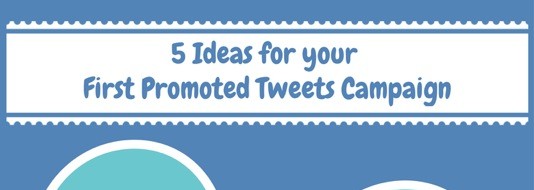For many marketers, promoted tweets are a bit of a mystery. How should you tune your promoted tweet campaign to get the results you’re looking for? How do you get your promoted tweet in front of your target audience?
The most important aspect of your promoted tweets is how you target them.
Promoted tweets look much like organic tweets and allow you to reach a much broader audience with targeting. You can specify the type of users you would like to see your tweets by defining their interests, words they use in their tweets, device, gender or geography. There are two targeting options that are of particular interest for us: Keyword targeting and Interests/Followers targeting.
Keyword targeting allows you to specify keywords you expect your target audience to be using in their tweets, which triggers your promoted tweet.

Interests and Followers targeting makes it possible to select certain Twitter accounts and target users with the same interests as followers of that Twitter account. Fancy!

Whether promoted tweets are right for your goals is for you to decide. But don’t let uncertainty about how to launch an effective campaign prevent you from advertising on Twitter. Here are five tricks to implement to make sure you are getting the most of these targeting options, so you can create effective and money-saving marketing campaigns on Twitter.
1. Use multiple handles in username targeting
The twitter algorithm analyzes the information about followers of @usernames you specify and tries to figure out the circle of interests of your target audience. So the more @usernames you add, the better you shape the image of the users you are targeting. The best practice is to add 10 to 25 Twitter handles per campaign.
Remember, that @usersnames you add within one campaign should have followers with more or less similar interests because this will strengthen the message about your target audience type. Also, it is better to avoid Twitter accounts with thousands of followers, since such followers will have a wider range of interests, which can confuse the algorithm and dilute the signal.
A large collection of accounts with specialized followers will give you the clearest audience.
2. Analyze your Twitter campaign by each handle or keyword separately
This is a very powerful feature that many marketers are not aware of. When you look at Twitter Ads analytics, you can breakdown the given campaign by smaller metrics to see how well each targeted @username or keyword performed.
Go to your Twitter Analytics dashboard and click Campaigns. Then select the campaign you want and click Keywords. Voila – you can find out what keywords were most effective, because they earned the highest engagement or were shown the most times. Likewise, you can see which keywords performed poorly. Use this information to craft your next tweet around successful keywords.

If you used Interests and followers targeting option, go through the similar path and select @Handles at the end. This will help you identify Twitter accounts whose followers were most interested in your promoted Tweet. Use these @handles again!

3. Avoid interest categories targeting
If the prime method of your tweet targeting is Interest and followers, Keywords, avoid adding interest categories to describe your audience better. Contrary to the frequent opinion, including interest categories extends your target audience makes targeting less specific and signal to the algorithm less sharp.

4. Leave “Target your followers” and “Target users like your followers” options unchecked:
One of the important functions of promoted tweets is that they allow you to reach the audience that your organic tweet cannot cover. Think long and hard about whether your twitter audience is the same as your promoted tweet audience. It’s quite possible that the users you want to see your promoted tweet are different from your account followers. In this case it is advisable to not include your followers or people similar to your followers on the target audience list. Otherwise, you will make the targeting vague and decrease the chances of getting the results you expect.

5. Create several promoted tweets for one campaign
I am a big fan of this feature. Since it is possible to promote several tweets within one campaign at once you can write several tweets that convey the same message in different ways (interrogative and affirmative sentences, including statistics, different calls to action, and so on) and test them to see which is most effective. Set these tweets to be promoted simultaneously and during the campaign Twitter can analyze the tweets performance. It will automatically begin to show more users the versions that receive better engagement. A/B testing made easy.
A final note about targeting:
Of course it depends on the niche and message being advertised, but in our company’s case keyword targeting turned out to be much more effective than Interests and followers targeting. Number of impressions / Total engagements ratio was much higher for tweets targeted by keywords, even with key phrases in broad match.

Even with these best practice recommendations, all targeting options and variants should be tested, because you never know for sure which combination of settings will work for your case. Luckily, with different methods of audience targeting, multiple tweets promotion in one campaigns and ability to analyze Twitter campaign by each handle and keywords separately, you have much more data to evaluate the results and build an effective promotion strategy that is right for your brand.
Elena is in charge of social media and content marketing efforts at Promodo. She is a Google Analytics certified individual and a very enthusiastic online marketer with experience in SEO and content marketing. You can connect with Elena via LinkedIn, Facebook, Twitter or Google+.
Elena says “Thanks to Twitter business support and Account Associate, Dana Shaps, who provided us with some great insights and helped us set up our first promoted tweet campaign.”






